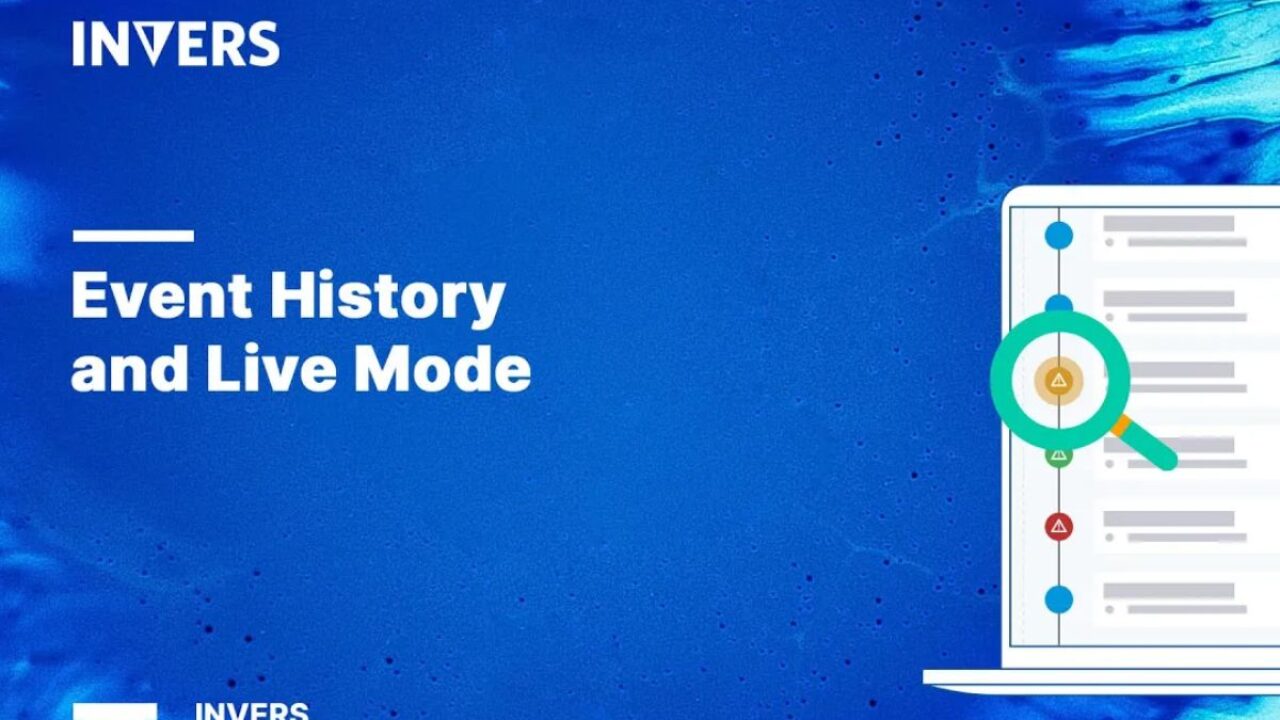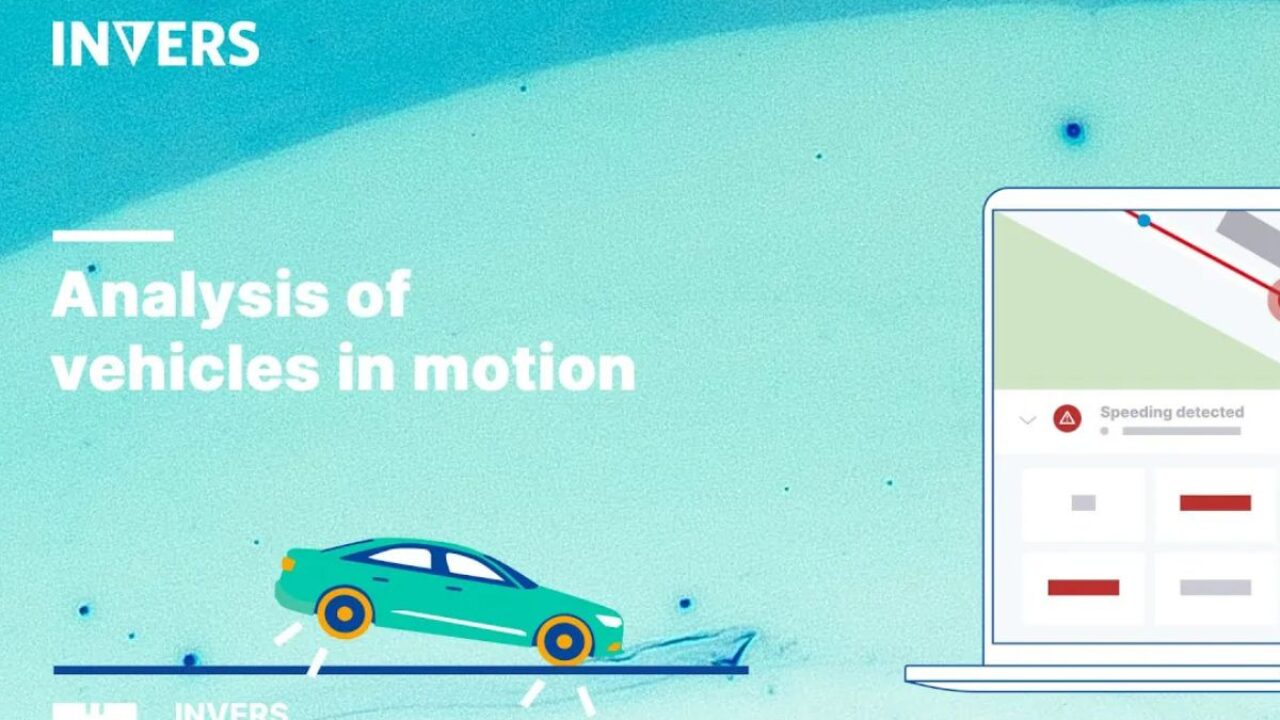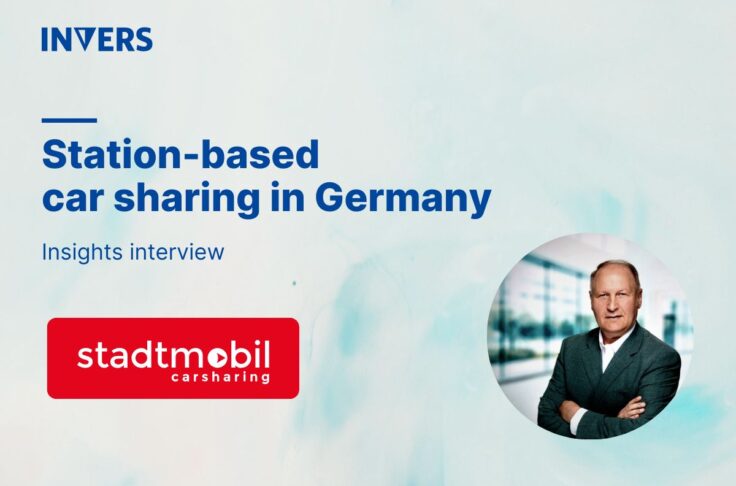Driving Analysis and Telematics: Real-World Use Cases for Safer Car Sharing

In the dynamic landscape of car sharing, grasping driver behavior is crucial for operational success and safety. INVERS offers a wealth of resources—webinars, blogs, and videos—on Driving Analysis. But how do car sharing operators use it in their day-to-day operations?
This article offers a glimpse of how some car sharing operators and fleet managers apply driving analysis in their daily operations. From identifying critical driving events to advanced predictive models, these Driving Analysis showcases will inspire you to enhance the safety and efficiency of your shared fleet.
Table of Contents
- Identifying high-risk users before they get into the car
- How Driving Analysis works: Driving Events
- Use Case #1: Post-accident investigations
- Use Case #2: Identifying dangerous drivers
- Use Case #3: Integration with custom algorithms for advanced data analysis
- Rewarding good drivers and safe driving
- Enhance fleet management with predictive insights
Identifying high-risk users before they get into the car
Many car sharing and rental operators typically react to risks only after incidents. They fix damaged cars post-accident or address fraud after it happens. This reactive approach may seem practical. But, it often leads to high costs and a drain on resources.
Some operators are using fleet driver tracking solutions for a more proactive approach. These systems offer innovative features like fatigue monitoring, collision avoidance, and geo-fencing rules. But, these solutions are for service fleets, like couriers. They track and improve driver behavior. This driver-centric approach is less relevant for car sharing due to frequent user changes. Also, driver coaching apps and monitoring raise privacy issues for short-term car sharing users.
Car sharing operators need a way to identify high-risk users before they get in the car. This is where INVERS’ Driving Analysis comes in. It offers a predictive risk management approach for car sharing operations. Driving Analysis uses CloudBoxx data to analyze driver behavior. Currently, about 43,000 vehicles worldwide use Driving Analysis. Many car-sharing operators report a 10% drop in accidents after using it.
How Driving Analysis Works: Driving Events

INVERS’ CloudBoxx has a built-in 3-axis accelerometer to detect shocks and vehicle movements. If the driver exceeds certain limits or thresholds, the system will log events, whether driving or parked. Operators can adjust the detection parameters for different vehicles and situations. The detectors should catch important events but not be too sensitive. For example, operators can set the minimal strength and duration of a shake to count as a motion for detection.
Driving events require vehicle speed and ignition information from the vehicle via CAN. CloudBoxx detects the following events while the immobilizer is unlocked:
- Crash – monitors shock and acceleration in any direction
- Heavy braking – monitors heavy braking and high accelerations in the longitudinal axis
- Harsh cornering – monitors the acceleration of the vehicle in the lateral axis
- Speeding – monitors when a vehicle is traveling faster than the speed limit and the preset threshold
Take a look at these two graphs:
These graphs show how a vehicle’s speed changes in two different situations:
Top Graph: Quick, Sudden Movement. This graph shows a sharp, brief change in speed. It’s like what you’d see in a sudden event, such as a crash or hitting a parking space barrier.
Bottom Graph: Steady, Ongoing Movement. This graph shows a quick speed increase followed by steady movement. This pattern matches what you’d expect if a vehicle was being towed.
Learn more about these features in our blog, Advanced Accelerometer Data.
Use Case #1: Post-accident investigations

Nitin Maslekar, the VP of Product and Tech at Miles Mobility, shared a story in our webinar, Advanced Data for Shared Mobility Operations. A user had called for help with a flat tire. However, after reviewing the driving data, Miles found that the flat tire was due to vehicle abuse.
The ability to easily filter and visualize vehicle data lets Miles quickly understand what happened before and during incidents. This applies to minor incidents such as this one or more serious ones like crashes.
Miles is not the only car-sharing operator using driving analysis to find the causes of incidents and accidents. These advanced insights allow operators to rely on their data instead of police reports or eyewitness accounts. Car sharing operators can use the data in court or with the insurance companies to act against negligent, reckless drivers in the event of accidents.
Use Case #2: Identifying dangerous drivers

Operators can use Driving Analysis to find trips with severe driving events. They should then cross-check these with their rental systems. This proactive approach lets them block users who exhibit dangerous driving patterns. By doing so, they reduce future risks and safeguard the fleet from potential damage.
For instance, while most drivers may exceed the speed limit slightly, a few may engage in excessive speeding, putting everyone at risk. Without a monitoring system, operators would only learn of such risks if law enforcement intervened. However, with Driving Analysis, operators can view these events on their FleetControl dashboard in real-time.
This lets them:
- Assess the risks and benefits of each driver.
- Block the most dangerous drivers if necessary.
- Prepare for potential speeding tickets or fines.
- Match fines to the exact rental period with proof of the violation.
This real-time information enhances fleet safety and allows for quick, accurate issue resolution.
Use Case #3: Integration with custom algorithms for advanced data analysis
Some car-sharing companies use Driving Analysis with custom algorithms and machine learning to improve risk management. Using INVERS’ data and their processes, operators can better predict risks. This allows them to manage high-risk drivers proactively.
Operators consume Driving Analysis events via API, giving them a holistic view of user behavior. Custom algorithms analyze various data points, including:
- Driving behavior
- User metrics
- Trip-related data (e.g., time of booking, frequency of use)
These systems can then block high-risk users after a bad trip. This prevents potential damages and accidents before they happen.
Advanced systems can also:
- Incorporate checks against known fraud detection database
- Manually review flagged accounts
Suspicious behaviors may indicate fraudulent activity. They include using multiple bank accounts, shared logins, booking many trips in a short time, and frequent late returns.
We have seen car sharing operators blocking as many as 2.5% of all users. Many operators prefer to be overly cautious, sometimes stopping users who don’t seem very risky, just to be safe. Some operators issue warnings before blocking a user and continue monitoring driving behavior post-warning. This approach enhances safety and fosters a culture of responsible driving among users.

Use Case #4: Rewarding good drivers and safe driving
Driving Analysis is a powerful tool for finding risky driving. Innovative operators can also use it to reward good driving habits. This approach enhances safety and promotes environmentally friendly driving practices.
Some operators use Driving Analysis to create a tiered response system where medium-risk trips trigger warnings to drivers. After receiving warnings, many users improve their driving habits, becoming valuable, responsible customers.
Additionally, the system can track metrics related to:
- Fuel efficiency
- Eco-friendly driving techniques
This helps identify users who consistently demonstrate safe and eco-friendly driving. A reward system with risk controls can help foster responsible driving and boost customer satisfaction and loyalty. This culture changes Driving Analysis from a purely preventative tool into a means of promoting a community of responsible, eco-conscious drivers.
Enhance fleet management with predictive insights
Predicting problems is changing how carsharing works. INVERS’ Driving Analysis helps operators stay ahead of risks and manage their cars better. It lets them:
- Spot risky drivers before accidents happen.
- Make better decisions based on real data.
- Use speeding as a critical warning sign.
- Customize the system to fit their needs.
The INVERS CloudBoxx lets operators monitor drivers in real-time. It identifies aggressive driving that may lead to accidents. In an industry where every trip matters, car sharing operators can use INVERS’ technology and risk models. They can predict and prevent high-risk situations to ensure safer operations for all users.
The future of car sharing is here
Don’t wait for your vehicle to star in a reckless driving video on social media. Talk to us today about adding Driving Analysis to your fleet. Start monitoring how your vehicles are being driven—no extra equipment needed.


